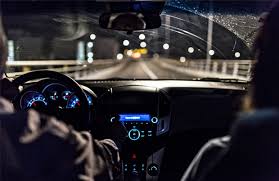Night driving can be challenging, even for experienced drivers. Darkness reduces visibility, making it harder to spot obstacles and hazards. While headlights and streetlights provide some help, they are not always enough. At King Driving School, we emphasize the importance of safe driving habits after dark. By understanding common mistakes and learning how to avoid them, you can make night driving safer for yourself and others.
Common Night Driving Mistakes
Many drivers underestimate the risks of night driving. Here are some mistakes you should avoid:
Driving Too Fast: Reduced visibility means less reaction time. Slowing down helps you spot obstacles earlier and gives you better control of your car.
Improper Headlight Use: Forgetting to turn on headlights or misusing high beams can cause accidents. Always switch on your headlights at dusk and use high beams wisely—never blind other drivers.
Following Too Closely: Tailgating at night is extremely risky. Leave extra space between your car and the vehicle in front.
Ignoring Fatigue: Driving while tired is as dangerous as driving under the influence. Rest before long night trips.
Not Adjusting Mirrors: Glare from headlights can be distracting. Adjust your mirrors to reduce glare and improve focus.
Tips for Improving Night Vision
Good night vision is key for safe driving. Here’s how to improve it:
Keep your windshield and mirrors clean to reduce glare.
Ensure your headlights are clean and properly aligned.
Consider anti-reflective glasses if you wear prescription lenses.
Dim dashboard lights to help your eyes adjust to the dark.
Add vision-friendly foods like carrots and leafy greens to your diet.
Essential Night Driving Safety Tips
At King Driving School, we train drivers to handle nighttime conditions with confidence. Here are essential tips you should always follow:
Use Your Lights Correctly – Turn on headlights at dusk and in poor weather. Use high beams only when safe.
Maintain Safe Distance – Keep a bigger gap between you and the car ahead.
Stay Alert – Avoid distractions like phones or eating while driving.
Reduce Speed – Drive slower at night to react in time to surprises.
Keep Your Car Road-Ready – Regularly check brakes, tires, and lights.
What to Do in Case of an Emergency
Even with precautions, emergencies may occur. Be prepared:
Pull over safely and use hazard lights.
Stay inside your car with your seatbelt on unless unsafe.
Call roadside assistance or emergency services for help.
Use warning signals (cones or reflective gear) if available.
Stay visible by keeping hazard lights on.
Conclusion
Night driving brings unique challenges, but with the right habits, you can reduce risks significantly. At King Driving School, we prepare our students to drive confidently in all conditions, including after dark. By slowing down, using lights correctly, staying alert, and preparing for emergencies, you can make night driving a safe experience.
Ready to build lifelong safe driving skills? Enroll at King Driving School today and learn from experts who prioritize your safety on the road—day and night.

